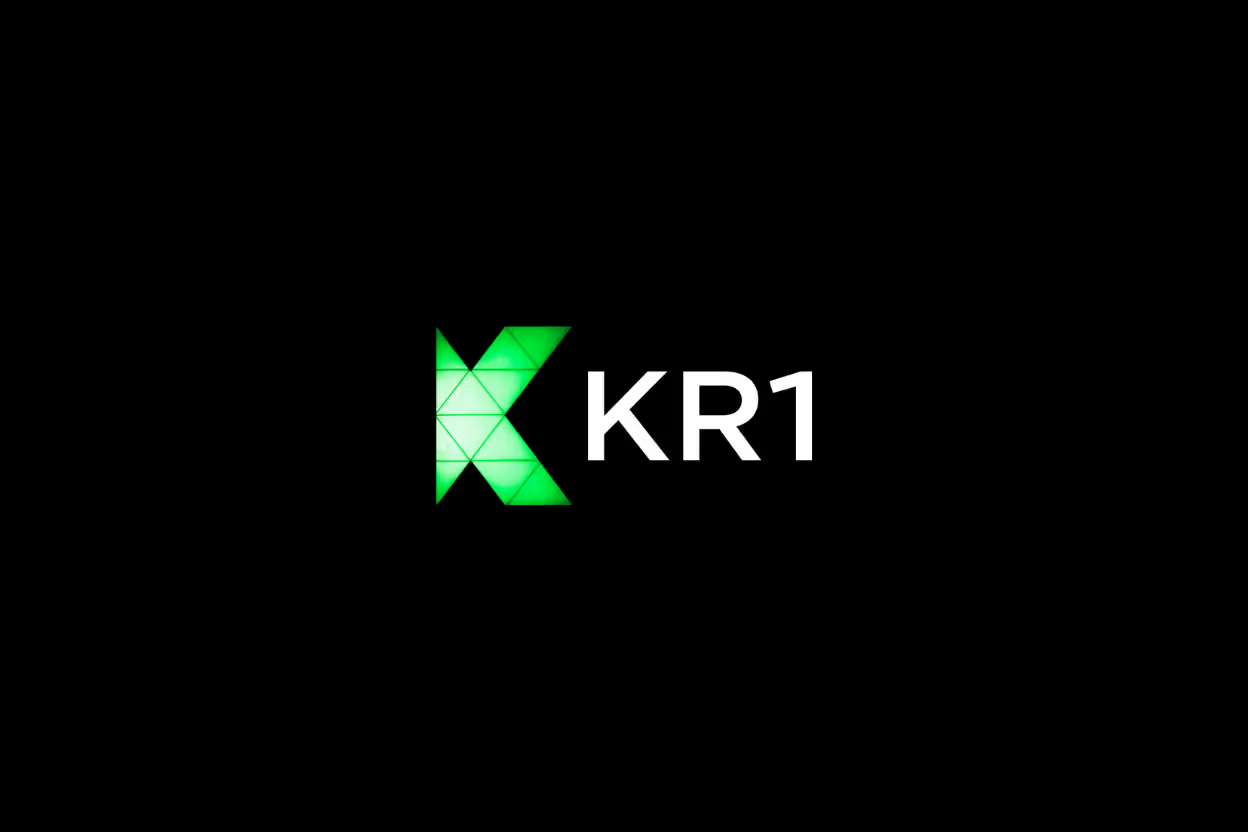Ghost developers are a growing force in Web3. These anonymous builders create code and bring projects to life without revealing their identity. This trend matters because it shifts how founders and investors assess teams and trust in the ecosystem.
Why do these developers stay hidden? It’s often about privacy, security, or simply not wanting the spotlight. For founders, understanding how to work with ghost devs means managing risks and recognizing real talent behind the scenes. Investors face questions too: how do you verify impact when you can’t see the person? This post covers why ghost devs matter, how anonymity shapes crypto projects, and what founders must know to navigate this new reality.
Understanding Ghost Developers in Blockchain
Ghost developers play a unique role in blockchain projects by building critical components without ever revealing their identity. Their anonymity often shapes how projects evolve and how teams operate behind the scenes. In this section, we examine why these developers choose to stay invisible and where they usually contribute within the blockchain ecosystem.
Key Motivations for Anonymity
Why do some developers choose to disappear behind a veil of anonymity? Several factors drive this decision, and understanding these motivations helps you appreciate their impact.
- Privacy: Many developers want to protect personal information. Blockchain projects can gather attention from governments, hackers, or activists, making privacy a top priority.
- Security: Revealing identity might expose a developer to targeted attacks, especially in a space rife with high-value assets. Staying anonymous reduces these risks.
- Freedom from Bias: Anonymity removes potential biases linked to age, gender, location, or previous work history. This enables the community to focus purely on code quality and contribution.
- Focus on Decentralized Principles: Blockchain thrives on decentralization and community-driven efforts. Ghost developers embody these values by staying disassociated from the traditional identity-driven recognition system.
- Avoiding Legal or Regulatory Issues: Some developers work in jurisdictions with uncertain rules about crypto. Remaining anonymous shields them from legal repercussions.
These motivations reveal a deliberate choice that aligns with the ethos of blockchain: a system judged by the code and not by who writes it.
Common Platforms and Frameworks
Where do these ghost developers usually leave their mark? They are most active in open environments where code transparency matters and identity verification is optional. Here are some typical platforms and tools where you can often find ghost developers contributing:
- Ethereum: The dominant smart contract platform attracts anonymous contributors who push updates or build decentralized applications (dApps). Open-source repositories on GitHub host a wealth of their work.
- Polkadot and Kusama: Known for their focus on interoperability, these networks rely heavily on community contributions, including those from anonymous builders.
- Open-source Code Repositories: Platforms like GitHub and GitLab serve as the main stage for ghost developers to publish anonymous patches, bug fixes, or feature enhancements. Their work advances projects without tying contributions to personal identities.
- Layer 2 Solutions and Sidechains: These growing ecosystems often invite anonymous collaborations to improve scalability and reduce costs on major blockchains.
The ability to contribute through open-source code makes it straightforward for ghost developers to engage without revealing themselves. It also challenges traditional ways founders and investors verify a project's development team.
Knowing these platforms can help founders evaluate contributions beyond just names on a team sheet. It prompts a new standard: judging work on quality and impact rather than identity.
Understanding these aspects creates a clearer picture of how ghost developers quietly influence blockchain's growth and why their anonymity matters.
Impact of Anonymous Development on Project Success
Anonymous development in crypto projects challenges traditional ideas about identity and credibility, yet many anonymous projects still thrive. How do these ghost developers win trust? How do teams keep projects on track when contributors are a mystery? This section highlights how projects navigate these challenges to maintain momentum, build confidence, and manage risks without knowing every developer’s name.
Building Trust Without Identity
Trust usually comes from knowing who the people behind a project are. Anonymous development flips this on its head. Instead of person-based trust, projects rely on transparent, verifiable proof of work.
Here are some common ways projects build credibility without revealing identities:
- On-chain Reputation: Developers who contribute code or proposals through decentralized platforms can build a history of reliable involvement linked to their wallet or account. This public trail creates a record anyone can inspect.
- Third-party Audits: Independent security firms review smart contracts and codebases, offering an unbiased seal of approval. These audits reassure investors and users that the project is safe, regardless of who wrote the code.
- Open-source Code: Visibility of the code itself is critical. Anyone can scrutinize, test, and verify the work. High-quality, well-documented code demonstrates professionalism and competence without needing personal names attached.
- Community Verification: Trusted community members often vet contributions. When respected participants endorse anonymous developers, that reputation spreads.
- Bug Bounty Programs: Running ongoing bug bounties encourages continuous review and improvement by a dispersed crowd, including anonymous contributors, making the code tougher and boosting trust.
These mechanisms focus on what the developers deliver, not who they are. Trust becomes measurable and real, grounded in transparent evidence and shared responsibility.
Managing Risk and Accountability
When core developers are unknown, accountability can feel like a puzzle. How can a project manage risk when it’s unclear who to turn to with questions or concerns?
Projects address this challenge by:
- Using Multisig Wallets or DAO Governance - Control over project funds and critical decisions is distributed among multiple parties. No single anonymous developer holds unchecked power.
- Clear Contribution Guidelines - Defining and enforcing standards for submitting code and updates helps ensure consistency regardless of who submits.
- Code Freeze and Timelocks - Before major upgrades or contract changes take effect, enforced delays allow the community to review and intervene if something looks wrong.
- Formal Roadmaps and Transparency - Publicly posted progress and objectives build external oversight into the process.
- Maintaining Open Communication Channels - Even without developer names, projects encourage interaction through forums, Discord, or Telegram to surface issues early.
What happens if a bug is found or something goes wrong? The project’s risk management comes from layered safeguards that minimize the impact of errors or bad actors. Anonymous developers may remain unseen, but the system itself stays accountable by distributing authority and offering checks.
Anonymous development comes with challenges, but it’s possible to harness this model to build strong, innovative projects that earn trust and keep risks controlled. This approach brings transparency to the work itself, shifting focus from identity to impact.
Balancing Transparency and Privacy in Web3 Development
In Web3, the tension between being open and protecting privacy is a daily challenge, especially for developers who often work behind the scenes. How can you stay invisible and still build trust? How do projects respect the core ideas of transparency while guarding individual privacy? This balance is central to the success of many blockchain projects where anonymous or ghost developers contribute. Let’s explore the practical ways developers shield their identity and how the community views this ongoing debate.
Privacy Tools and Practices for Developers
Developers in Web3 use several tools and methods to maintain anonymity while contributing. Protecting identity is no longer just a matter of hiding a name; it involves technical safeguards and disciplined habits. Here are key strategies used:
- Using Pseudonymous Wallets: Instead of personal details, developers connect through wallet addresses. These pseudonymous accounts link contributions and transactions without revealing real identities.
- Privacy-Focused Communication: Tools like Signal, Matrix, or encrypted chat platforms help keep discussions confidential. Avoiding public social media or email reduces exposure.
- VPNs and Tor Networks: Routing internet traffic through VPNs or Tor masks IP addresses, making it difficult to trace online activity back to a location or person.
- Zero-Knowledge Proofs and On-Chain Privacy Tools: Some advanced techniques allow proving participation or action without revealing underlying data, preserving private details while ensuring accountability.
- Separate Work and Personal Accounts: Developers often segregate their development environment, browsers, and machines used for anonymous contributions from personal devices.
- Code and Contribution Guidelines: Careful review of code commits, removal of metadata, and avoiding embedding personal clues like email addresses or usernames in code is common practice.
- Secure Payment Methods: Using privacy coins or mixers when receiving compensation helps prevent linking earnings to a real-world identity.
By combining these techniques, ghost developers maintain their shield without slowing down workflow. It’s about adopting a mindset of caution and consistently applying privacy habits, so an identity never slips through the cracks.
Community Perspectives on Developer Identity
Opinions vary widely about anonymous development in Web3. The community splits between those who see anonymity as essential and others who push for full transparency.
- Supporters of Anonymity argue it protects valuable contributors from harassment, legal concerns, and bias. They see it as a way to keep Web3 ideologically pure — judged only by code. Privacy enables more people to participate, especially those in sensitive roles or restrictive regions.
- Advocates for Transparency believe knowing who builds projects ensures better accountability. They question whether anonymous teams can be fully trusted or if the lack of identity hides risks. Transparency is viewed as key to attracting investment and user confidence.
- Hybrid Views accept the need for some identity shielding but encourage revealing enough for reasonable trust. For example, pseudonymous reputations or periodic public audits provide balance.
- Governance Groups and DAOs often debate how much identity disclosure they require from contributors to maintain fairness and security.
This mix leads to various governance models. Some projects fully embrace ghost development, relying on cryptographic proofs and multi-party controls. Others require public profiles and enforce strict KYC for core developers.
The broader community is still feeling out the right balance. The choice influences not just technical design but how users and investors see a project’s legitimacy.
Finding this balance matters for founders and investors alike. It shapes the culture and security of the project, affecting its long-term growth.
Understanding both sides of this debate can help teams design better policies and tools for anonymous contributors without losing the benefits of openness.
Strategies for Founders and VCs When Engaging with Ghost Developers
Working with ghost developers presents unique challenges. Without knowing who is behind the code, founders and investors must rethink standard approaches to evaluation and relationship-building. These strategies focus more on measurable contributions than on personal identity and on creating ongoing engagement without breaching anonymity. Let’s explore effective ways to approach these invisible builders and ensure projects move forward with confidence.
Due Diligence Beyond Identity
How do you evaluate someone when their name and background are hidden? The key is to shift the focus from personal details to the quality and consistency of their work. Here’s what founders and VCs should prioritize:
- Technical Skill and Code Quality
The code itself speaks volumes. Look for clean, efficient, and well-documented contributions. Track how problem-solving and innovation appear in their commits or pull requests. Consistent high-quality submissions indicate reliability. - Contribution History
Reliability often comes with a track record. Examine the volume and frequency of contributions over time. Sporadic appearances might signal lower commitment, while steady involvement suggests dedication to the project or community. - Community Trust and Endorsements
Anonymous developers sometimes build strong reputations through community validation. Pay attention to endorsements from respected team members or contributors. Reputation in a community can act as a stand-in for identity. - On-Chain Activity and Wallet Reputation
In blockchain projects, wallet addresses linked to contributions, voting, or governance actions build a form of reputation. Analyzing on-chain interactions may reveal patterns of trustworthiness and influence. - Security Audits and Third-Party Reviews
Code verified through independent audits gains credibility. Even if the developer prefers to stay hidden, external validation can reduce risks and boost investor confidence.
By focusing on outcomes and evidence rather than names or faces, founders and VCs can make informed decisions. This process reduces bias and highlights actual impact. It’s about judging developers by their work, not their identity.
Building Relationships and Incentives
Ghost developers still need motivation and a reason to contribute regularly. Without personal recognition, how can founders keep these contributors engaged and aligned with project goals?
Here are some practical suggestions:
- Offer Incentives Linked to Deliverables
Transparent reward systems such as tokens, bounties, or royalties tied to completed tasks encourage ongoing participation. Incentives should focus on measurable output rather than personal identity metrics. - Provide Clear Communication Channels
Maintain anonymous-friendly communication methods—encrypted chats, private forums, or pseudonymous Discord servers. Consistent interaction helps build trust and keeps everyone aligned on progress and expectations. - Create Pseudonymous Profiles or Reputation Systems
Allow contributors to maintain persistent pseudonyms or wallet-linked identities. These profiles can gain status in the community and serve as social proof without compromising privacy. - Use Decentralized Governance Models
Empower contributors via DAO structures where decisions and rewards are transparent, and power is distributed. This encourages equal participation without forcing personal disclosure. - Clarify Project Vision and Roadmap
Clear goals motivate contributors who want their work to matter. Sharing progress openly (while respecting anonymity) fosters a sense of purpose and collective achievement. - Recognize Contributions Publicly in Safe Ways
Public shout-outs to pseudonymous contributors or recognition through leaderboards can boost morale without revealing personal information.
Building productive relationships with ghost developers requires patience and respect for their need for privacy. But with the right incentives and communication, they become reliable partners who add value without traditional identity constraints.
In the world of anonymous builders, proving trust through output and fostering connections through thoughtful incentives is how projects thrive. Founders and VCs prepared to operate on this basis will find themselves working effectively with talented ghost developers who shape the future of Web3.
Conclusion
Ghost developers redefine how success is measured in crypto and Web3 projects. Their real impact lies in the quality and consistency of their contributions, not in their personal identity. Founders and investors must focus on tangible results, community trust, and transparent processes rather than traditional notions of identity.
Maintaining a balance between privacy and accountability is key. Projects that apply clear standards, audits, and decentralized governance can include anonymous builders without sacrificing security or trust.
As this model gains traction, openness to anonymous development will become an asset, not a concern. The focus should remain on delivering value through code that stands on its own merit, shaping the future of blockchain development.









